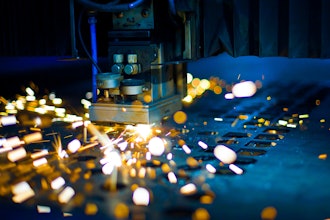CALGARY, Alberta (AP) -- A rotorcraft described as a "blimp on steroids" to haul construction equipment and supplies to remote areas will be built by The Boeing Co. and SkyHook International Inc., the two companies have announced.
Under the plan announced Tuesday by Boeing, based in Chicago, and Skyhook, a privately held business in Calgary, the Jess Heavy Lifter, or JHL-40, a helium-filled dirigible powered by four large helicopter-style rotors, would be designed to carry up to 40 metric tons of steel, trucks and other goods nearly 200 miles without refueling.
Earth-moving equipment, steel and other cargo would be slung from the belly of the blimp-like device, intended for use in roadless areas such as northern Canada for use in petroleum, gas, diamond and metal exploration and development.
Under the agreement, Boeing will design and making two prototypes at its plant in Ridley Park, Pa., and SkyHook will own, maintain, operate and service the aircraft. Cost of the prototypes and development expenses were not disclosed.
Boeing and SkyHook hope to have the first JHL-40 in service by 2012.
SkyHook President Peter Jess, 55, a former helicopter pilot, said he came up with the idea 25 years ago after encountering logistical problems while working in the oil and gas industry.
"I envisioned that we could do something better than what we were doing and we're now approaching being able to that," Jess said. "It's a blimp on steroids because its got more than 20,000 horsepower on it. It's a serious working machine."
Once SkyHook secured the patent, the company took the design to Boeing, which has been involved in helicopter production since the company acquired Vertol in 1960.
"Most people in the airship world try to be all things to all people. Every airship has ton of capability that it really may or may not need because it tries to please a broad audience," said Kenneth Laubsch, Boeing's chief engineer for advanced rotorcraft systems.
"This is a purpose-driven machine for specific operations. We have skinned out all of the fluff, so to speak, and everything that goes into this aircraft is going to be to meet its mission."
Jess said the airship would be less polluting and damaging to fragile ecosystems in remote areas than current methods.
"When you weigh up the environmental impact of building a road and the fuel associated with maintaining a road and hauling snow... it's quite interesting to see how that adds up in comparison," he said.






















